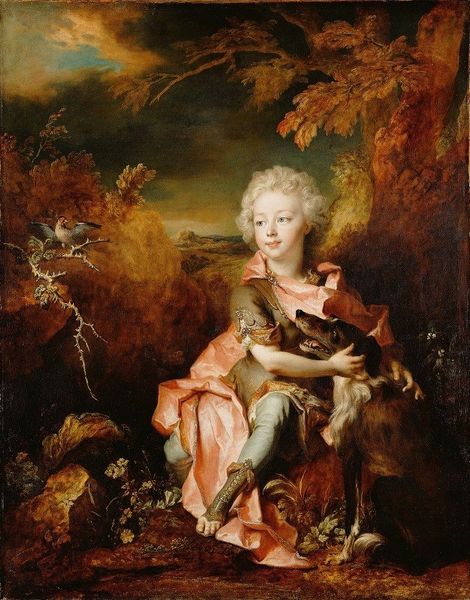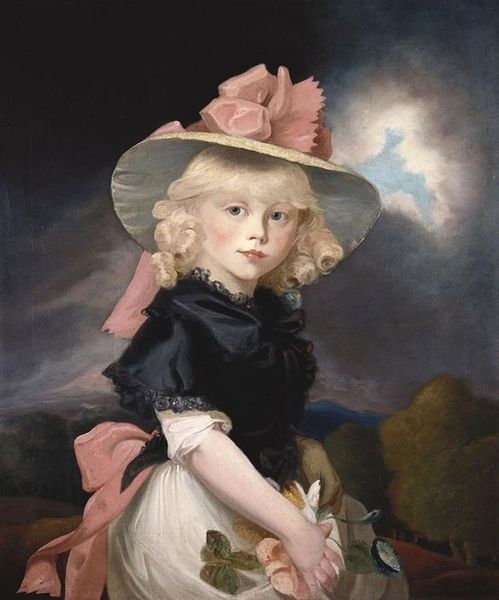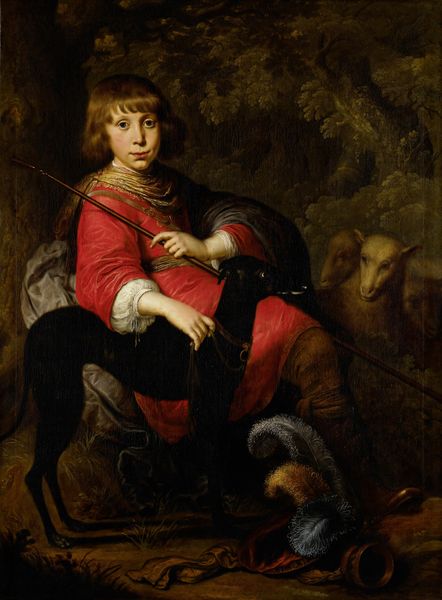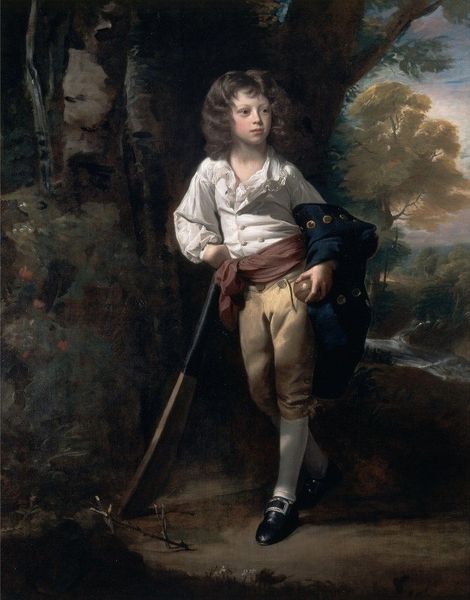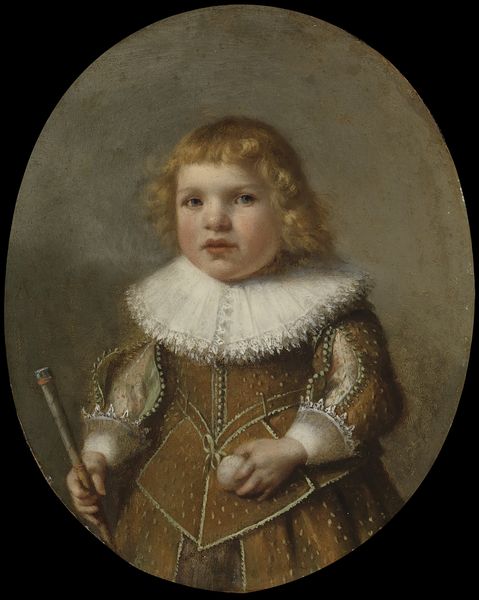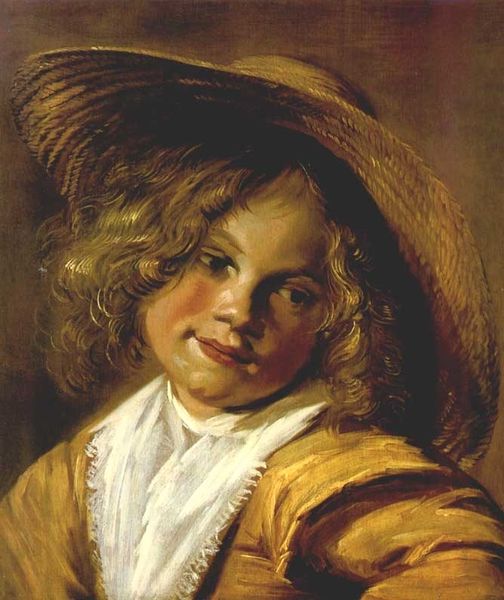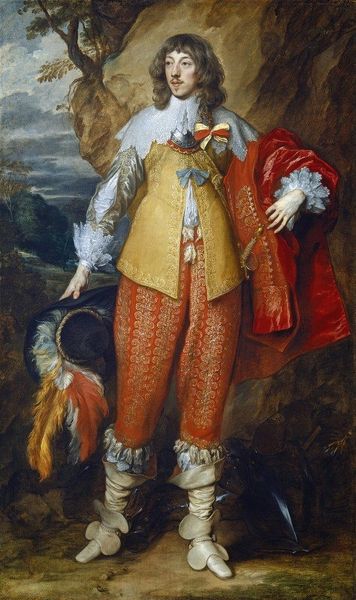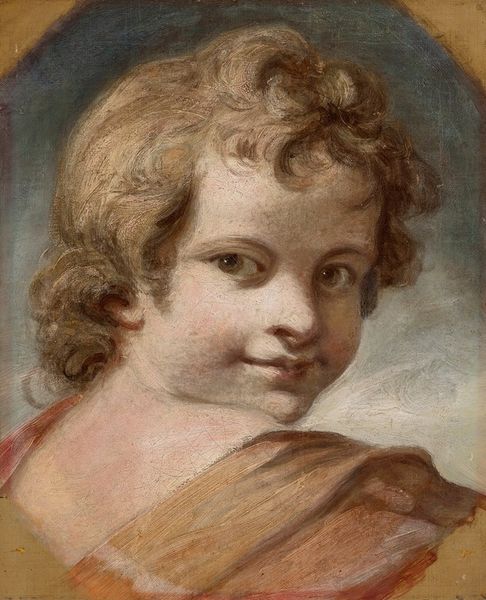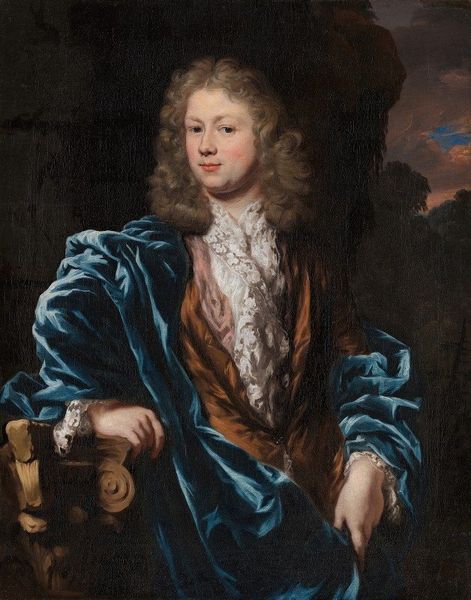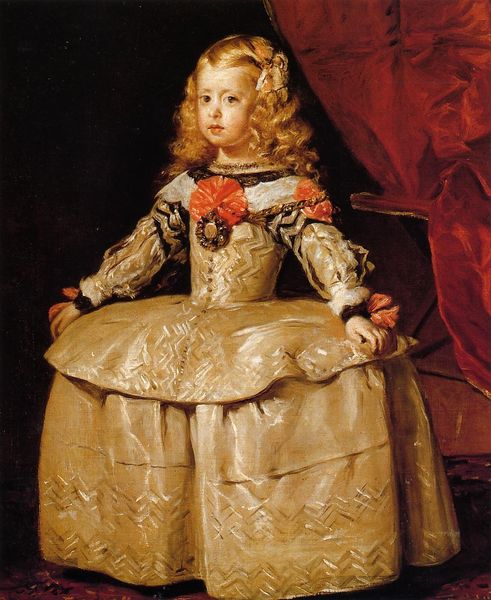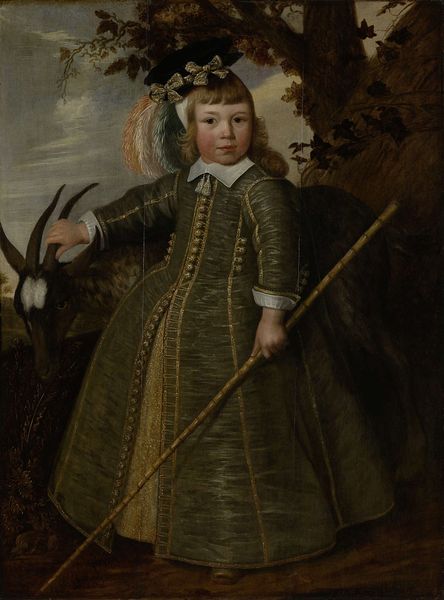
painting, oil-paint
#
portrait
#
figurative
#
baroque
#
dutch-golden-age
#
painting
#
oil-paint
#
figuration
#
animal portrait
#
genre-painting
#
portrait art
Copyright: Public Domain: Artvee
Curator: Good morning! We’re looking at "Portrait of a Boy with a Bow and a Dog" by Nicolaes Maes, painted in 1673 with oil on canvas. Quite a picture, isn't it? What strikes you first? Editor: The theatricality of it! That red drape, the golden costume... he could be on stage. And the dog looks ready for direction, waiting in the wings. Curator: Maes was quite fond of genre painting, especially these theatrical portraits of children. The boy, perhaps around six or seven, is posed as some mythological figure, right? Perhaps a young Cupid or a woodland deity. Editor: Cupid makes sense with the bow. Though, looking closer at the bow itself, it seems a bit… undersized, almost a toy. As though the artist wanted to signal youth more than power. It's not a weapon, it’s a prop. And there’s the dog—a symbol of loyalty, friendship, perhaps innocence, nestled by his side. Curator: Precisely! Dogs often represented faithfulness. Maes cleverly uses symbolism. He's constructing this image, placing this child in a lineage of classical ideals. That golden outfit shimmers, doesn't it? Maes had such an eye for capturing light. Editor: He did, it’s almost iridescent. And note how he contains the boy within that dark oval shape, and contrasts with the more fluid and blurred background. The portrait isolates him. Do you think he enjoyed these sittings, I wonder? Curator: Oh, one always wonders that about child portraiture. But maybe the dog kept him entertained? This isn't just about accurate likeness. Maes used a whole visual language— classical allegory and then these lovely Baroque touches, color and dramatic contrasts. I think Maes asks the viewer to see past immediate representation and seek out allegorical content. Editor: It feels as though Maes captured not just a child, but an ideal of youth—that brief window where play and seriousness blend. It's more than a portrait; it’s an echo of enduring ideas. Curator: Absolutely. I keep coming back to the texture. Maes understood what a visual art object could signify, materially, emotionally. The work has survived to resonate through centuries. Editor: Yes, seeing such clear emotion—well, something keeps its energy alive. We should heed such continuity and memory.
Comments
No comments
Be the first to comment and join the conversation on the ultimate creative platform.
